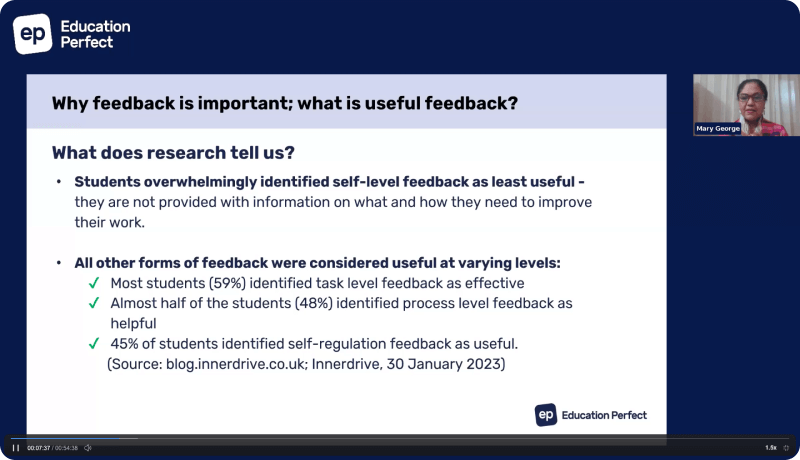Creative Strategies for Formative Assessment

The start of the year is always a great time to begin new routines and the classroom is no exception. As the new school year was getting started, I found myself reflecting on the routines I’ve tried to establish at this time of year and thinking about the importance and necessity of putting an effort into maintaining them.
I came across this great sketchnote on Twitter which was published by Impact Wales, a website which provides many resources for inspiring new ideas and routines in the classroom. It outlines seven awesome ways to check for understanding and it prompted me to look further into what effective formative assessment looks like.
Before exploring any further strategies for effective formative assessment, I thought it might be useful to define what formative assessment is. The TKI website gives the following definition:
“Formative assessment is an educational measurement that is used to inform the teaching and learning process. Ideally, both the teacher and the student will gain information from the assessment and use it collaboratively to plan future learning activities. The important thing in formative assessment is to gain as much information as possible in respect of what the student has achieved, what has not been achieved, and what the student requires to best facilitate further progress.”
In this article, I am going to unpack a couple of the ideas mentioned above in the diagram in more detail and then explore some further formative assessment strategies.
Exit slips
Exit slips are a great way to get an idea of students’ understanding of a particular topic. You might get students to do this on a piece of paper and put it in a box at the end of a lesson, or you might choose to use one of many online tools such as Google forms or a simple email to the teacher at the end of the lesson. To make it a bit more fun for the students, why not actually create a post box in your classroom where they put their exit slips.
The reflection on the exit slip can be as complex or as simple as you like. In the simplest form, you could just get the students to use an emoji which shows how they are feeling about a particular topic or alternatively, you might ask the students to write one thing they are feeling confident with and one thing they feel they need to do more work on. If you wanted to go further, you might ask some more in-depth questions. Here are some questions suggested by Laura Thomas:
- What are three things you learned, two things you’re still curious about, and one thing you don’t understand?
- How would you have done things differently today, if you had the choice?
- What I found interesting about this work was…
- Right now I’m feeling…
- Today was hard because…
You can quickly review the exit passes and then decide on your next steps from there. This might inform whether or not students are ready to move on to a different topic or you might plan some group work based on this and put the students into groups according to their responses on the exit pass. One group might benefit from having some 1-1 time with the teacher explaining a particular concept again – or you could even use the groups for some peer teaching. You might buddy up a student who is feeling confident about a particular topic with a student who isn’t. There are a lot of ways in which you can use Exit passes to inform your next steps.
Traffic lights:
Another quick way to see how students are going with a particular concept is to get them to put their work into either a red, orange or green box. At the end of a lesson or on completion of a task, they need to self evaluate and decide how they are feeling about the task they are working on. If they are struggling then they put it in the red box, if they are feeling ok, but could do better, they can put it in the orange box and if they are feeling good about it they can put it in the green box. This gives you a quick way of seeing how students are feeling about a particular concept or task and can assist with how you plan the following lessons. You might plan the upcoming lessons accordingly and you might spend more time with those who had put their work in the orange or red box, while finding something else for the people with their work in the green box to move on with.
You can use the traffic light idea in many ways – it might just be getting students to stand in a different place in the room according to how they are feeling about a particular task – or you might give them each a set of traffic light cards and they have to put the one out on their desk which best summarises how they are feeling about a particular task. This gives you a very quick indication as you are walking around the room as to who might need some additional support.
Creative formative assessment tasks:
In addition to the tasks shown in the diagram above there are a number of other creative formative activities you could try which require very little teacher preparation.
- Students could write a letter or an email to a friend explaining a particular topic or concept.
- Students could draw a picture or make a poster to visually represent a new topic or illustrate what they have learned.
- Students could make a movie or a song which summarises what they have learned.
Next steps:
The important part of any formative activity is making sure you use the information from the task to inform the next steps in the classroom. This might involve modifying your learning plans, setting new goals and using various differentiation strategies to help meet the needs of the diverse learners within the classroom. For some more insight on differentiation strategies, I would recommend reading the article “Three Ways to Effectively Differentiate your Classroom”, written by my colleague, Paula Prouse.
Have you tried any of these strategies? If so, how successful were they? Have you got any you would like to share? I would love to hear your stories.




